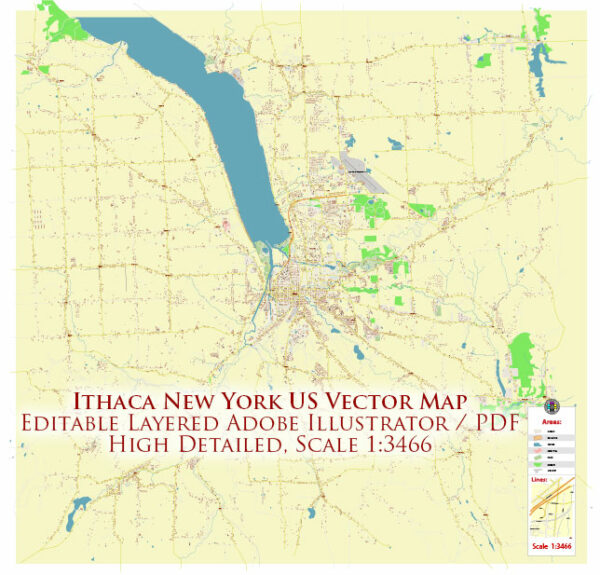Ithaca, located in upstate New York, has a rich history of urban development that reflects the broader trends and influences of American history. Here is an overview of key points in Ithaca’s urban development:
1. Early Settlement (Late 18th Century – Early 19th Century):
- Ithaca’s history as a settlement dates back to the late 18th century when European pioneers began to establish farms in the area.
- The town’s growth was influenced by its proximity to Cayuga Lake and its fertile land, attracting settlers looking for agricultural opportunities.
2. The Arrival of Education Institutions (19th Century):
- The 19th century saw the establishment and growth of educational institutions, particularly Cornell University, which was founded in 1865.
- The presence of Cornell contributed significantly to the town’s growth and development, influencing its cultural and economic landscape.
3. Industrialization and Economic Growth (Late 19th – Early 20th Century):
- Ithaca experienced industrialization during the late 19th and early 20th centuries, with industries such as milling, manufacturing, and the Morse Chain Company playing key roles.
- The growth of these industries led to an increase in population and the development of infrastructure, including roads and railways.
4. Urban Planning and Architecture (Early to Mid-20th Century):
- The early to mid-20th century saw urban planning initiatives and architectural developments that shaped the town.
- The introduction of zoning regulations and planning efforts influenced the layout and design of Ithaca’s neighborhoods.
5. Decline of Industry and Rise of Education and Technology (Mid-20th Century – Present):
- Like many other cities in the United States, Ithaca experienced a decline in traditional industries during the mid-20th century.
- However, the presence of Cornell University and later, Ithaca College, contributed to a shift towards education and technology as major economic drivers.
6. Preservation and Revitalization (Late 20th Century – Present):
- In recent decades, there has been a focus on preserving and revitalizing historical areas of Ithaca.
- The Commons, a pedestrian mall in downtown Ithaca, is an example of a revitalization project that aimed to create a vibrant city center.
7. Sustainable Development and Community Engagement:
- Ithaca has become known for its commitment to sustainability and environmental consciousness.
- Community engagement in planning and development decisions is a hallmark of the city’s approach to maintaining a balance between growth and preservation.
8. Challenges and Opportunities:
- Like many cities, Ithaca faces challenges such as affordable housing, traffic congestion, and balancing growth with environmental conservation.
- Opportunities for further development and innovation continue to arise, particularly in the fields of technology, education, and healthcare.
The history of Ithaca’s urban development is characterized by a combination of agricultural roots, industrialization, educational influence, and a commitment to sustainability. Today, Ithaca stands as a unique city that blends historical charm with a progressive and forward-thinking approach to urban living.


 Author: Kirill Shrayber, Ph.D.
Author: Kirill Shrayber, Ph.D.